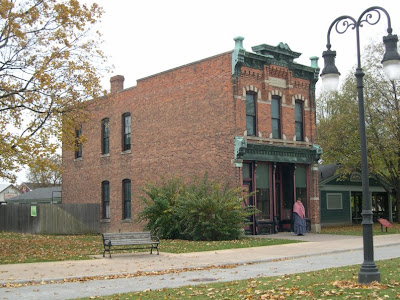Pottery Shop (formerly known as Fairfield Rice Mill)
 Once situated on the Fairfield Plantation at the Waccamaw River near Georgetown, South Carolina, this building housed the threshers, grindstones, shafts, and pulleys needed for the miller to do his job of threshing the grains of rice.
Once situated on the Fairfield Plantation at the Waccamaw River near Georgetown, South Carolina, this building housed the threshers, grindstones, shafts, and pulleys needed for the miller to do his job of threshing the grains of rice.William Alston had erected this brick building 1787 (Fairfield Web Site).
Once situated on the Fairfield Plantation at the Waccamaw River near Georgetown, South Carolina, this building housed the threshers, grindstones, shafts, and pulleys needed for the miller to do his job of threshing the grains of rice. A rice huller or rice husker was an agricultural machine used to automate the process of removing the chaff and the outer husks of rice grain and, although I have no positive proof of this, was more than likely used in this building.
The building is now the pottery shop where visitors can watch artisans complete the traditional process of making pottery, from mixing and forming the clay to decorating, glazing, and firing it in the kiln. The types of useful items made here range from mugs and bowls to plates, various sized pitchers, and other period ware. In fact, utensils used in the historical homes throughout the village are made right here as well.
 The best part is that most of what is made here can be purchased in the various gift shops. High quality items, buy the way.
The best part is that most of what is made here can be purchased in the various gift shops. High quality items, buy the way.At this time, I do not have a year of when this structure was originally constructed but I do know it was brought to the Village in the 1939/1940 era.
 |
| The various kilns to cook the pottery. |
.




Comments